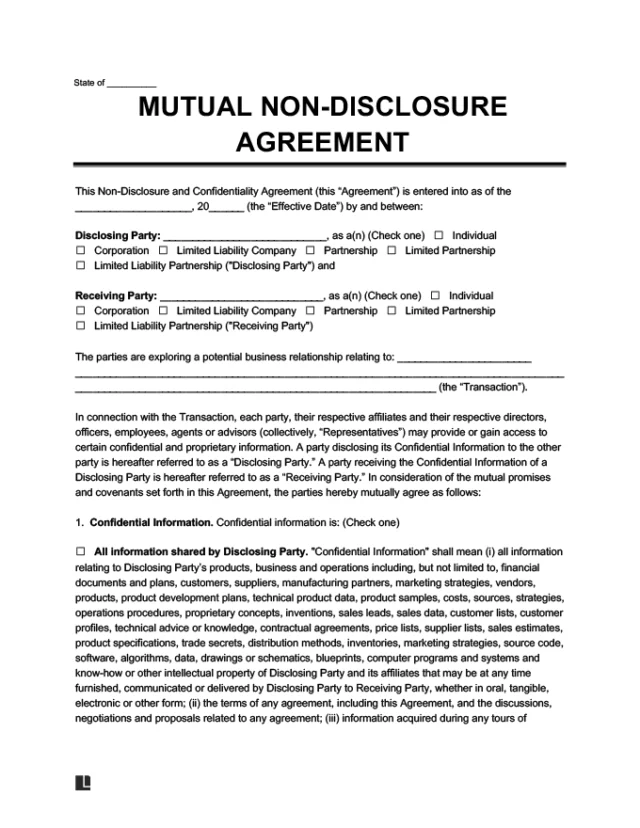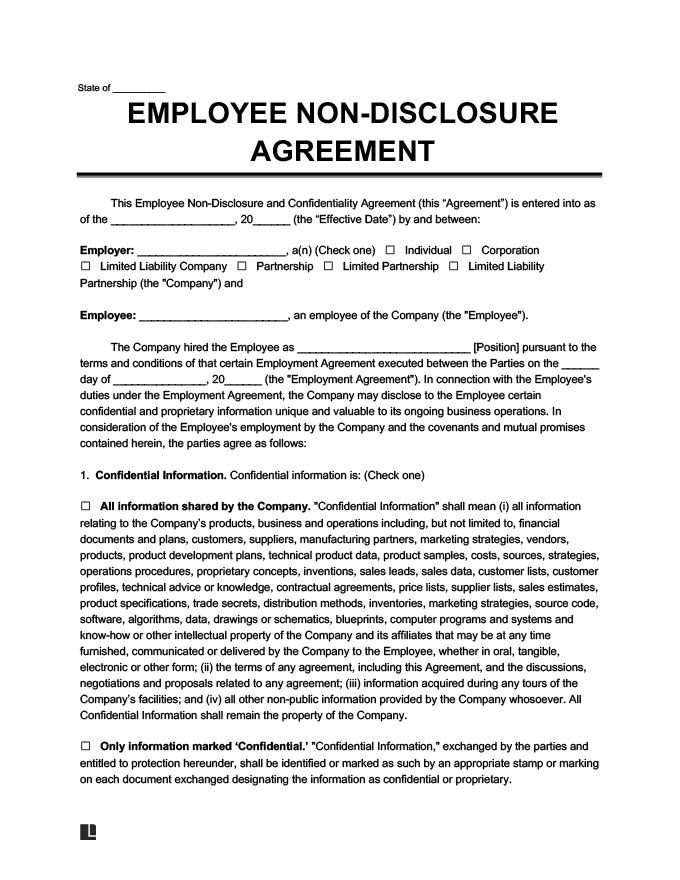What Is an Employee Non-Disclosure Agreement?
An employee non-disclosure agreement (NDA) is a legal contract between an employer and an employee. It’s designed to keep sensitive information confidential and protect the company’s proprietary data.
Employers may require NDAs before a dispute arises, often at the start of a job or during employment. They can also appear after a dispute, usually in a settlement, separation, or severance agreement.
The scope often goes beyond trade secrets. It can cover information shared in confidence, and in some cases, even public facts or an employee’s skills and experience. These rules apply to both using and sharing the covered information.
When Should I Use an Employee Non-Disclosure Agreement?
You should use an employee NDA whenever someone will access information that could harm the business if shared. These agreements come into play when trust is required and confidentiality helps protect the company’s interests.
Common scenarios where a non-disclosure agreement for employees makes sense:
- Hiring for roles with access to sensitive data
- Promoting staff into higher security positions
- Bringing in contractors, interns, or temporary workers
- Starting collaborative projects
- Negotiating with potential partners or vendors before signing contracts
- Granting access to internal systems or databases
- Sharing product designs, prototypes, or launch plans
- Holding meetings about strategic plans, mergers, or acquisitions
Protected information can be anything from the secret formula that sets your product apart to the blueprint for your next design. It can also include intellectual property like patents and trademarks, marketing strategies your competitors would love to see, and client details you’re trusted to keep private.
Even internal financial reports and proprietary data fall under the NDA’s shield. You can create yours quickly with Legal Templates’ free employee non-disclosure agreement template to guard your information against misuse.
Some NDAs are mutual, while others only bind one party. Learn the difference in our guide, What Is the Difference Between Bilateral and Unilateral Contracts?.
Are Employee NDAs Enforceable?
Employee non-disclosure agreements can be enforceable if they’re well-written, signed, and backed by clear consideration. Courts decide if the scope, duration, and restrictions reasonably guard genuine business interests, such as trade secrets.
They’re less likely to hold up if they’re vague, overly broad, or try to cover public information or third-party data. The same applies if the consideration is unclear, the terms create a major power imbalance, or they require illegal acts, like hiding fraud or harassment.
Federal law also shapes how NDAs work.
- The FTC’s 2024 ban on most non-competes has led more employers to rely on NDAs.
- The 2022 Speak Out Act blocks the enforcement of NDAs and non-disparagement clauses signed before sexual assault or harassment disputes.
- Whistleblower laws allow employees to report violations confidentially or anonymously.
State laws add another layer. Some treat employee NDAs like non-competes, including California and Wisconsin.
The Uniform Restrictive Employment Agreement Act (2021), introduced as legislation in five states (Colorado, Oklahoma, North Carolina, Vermont, and West Virginia), further narrows things by limiting employee NDAs to truly confidential information.
What Should I Include in an Employee NDA?
An employee NDA should be clear and specific. Each part should protect the company while staying fair to the employee.
- Define confidential information by explaining exactly what it covers, such as trade secrets, proprietary data, and knowledge gained through the role that gives the company an advantage.
- State the purpose so it’s clear that the employee NDA exists to protect confidential information, trade secrets, and the company’s competitive position.
- Outline employee obligations for both during and after employment, making clear that confidential information cannot be used or disclosed after leaving.
- Set the duration with common terms of one to five years post-termination, while protecting trade secrets indefinitely.
- Explain consideration by stating what the employee receives in return for signing, such as a job offer or continued employment.
- Keep the scope reasonable and limit it to what’s relevant for the role, adding geographic limits only if necessary.
- List consequences for breach that could include termination, injunctions, damages, or covering legal fees.
- Address property return or destruction by requiring all company property and confidential materials to be returned or destroyed when employment ends.
- Add standard legal clauses such as governing law, integration, and severability to make the NDA complete and enforceable.
A fair and properly written employee non-disclosure agreement keeps sensitive information secure and sets firm boundaries for employees.
Sample Employee Non-Disclosure Agreement
Take a look at the sample below to see what an employee NDA includes. When you’re ready, customize it to meet your needs and then download it in PDF or Word.






